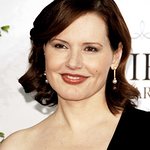The first-ever global study on female characters in popular films, launched yesterday, reveals deep-seated discrimination and pervasive stereotyping of women and girls by the international film industry.
The study was commissioned by the Geena Davis Institute on Gender in Media, with support from UN Women and The Rockefeller Foundation and conducted by Stacy L. Smith (PhD) and her research team at the Annenberg School for Communication and Journalism at the University of Southern California.
The investigation analyses popular films across the most profitable countries and territories internationally, including: Australia, Brazil, China, France, Germany, India, Japan, Russia, South Korea, United States, United Kingdom, as well as UK-US collaborations.
While women represent half of the world’s population, less than one third of all speaking characters in film are female. Less than a quarter of the fictional on-screen workforce is comprised of women (22.5 per cent). When they are employed, females are largely absent from powerful positions. Women represent less than 15 per cent of business executives, political figures, or science, technology, engineering, and/or math (STEM) employees.
“The fact is – women are seriously under-represented across nearly all sectors of society around the globe, not just on-screen, but for the most part we’re simply not aware of the extent. And media images exert a powerful influence in creating and perpetuating our unconscious biases,” said Geena Davis, Founder & Chair of the Geena Davis Institute on Gender in Media. “However, media images can also have a very positive impact on our perceptions. In the time it takes to make a movie, we can change what the future looks like. There are woefully few women CEOs in the world, but there can be lots of them in films. How do we encourage a lot more girls to pursue science, technology and engineering careers? By casting droves of women in STEM, politics, law and other professions today in movies.”
Stereotyping also stifles women in prestigious professional posts. Male characters outnumber female characters as attorneys and judges (13 to 1), professors (16 to 1), and doctors (5 to 1). In contrast, the ratios tipped in the favour of females when it came to hypersexualization. Girls and women were over twice as likely as boys and men to be shown in sexualized attire, with some nudity, or thin.
“Females bring more to society than just their appearance,” said Stacy L. Smith, the principal investigator. “These results illuminate that globally, we have more than a film problem when it comes to valuing girls and women. We have a human problem.”
While the report shows how discriminatory attitudes that affect women and girls are reflected in film worldwide, it also points to some significant differences among countries. The frontrunners (UK, Brazil, South Korea) feature female characters in 38 – 35.9 per cent of all speaking roles on-screen. UK-US collaborations and Indian films are at the bottom of the pack, clocking in at 23.6 per cent and 24.9 per cent female respectively. Half of South Korean films featured a female lead or co-lead, as did 40 per cent of the films analysed from China, Japan and Australia.
“Twenty years ago, 189 Governments adopted the Beijing Platform for Action, the international roadmap for gender equality, which called on media to avoid stereotypical and degrading depictions of women. Two decades on, this study is a wake-up call that shows that the global film industry still has a long way to go,” said UN Women Executive Director Phumzile Mlambo-Ngcuka.
“With their powerful influence on shaping the perceptions of large audiences, the media are key players for the gender equality agenda. With influence comes responsibility. The industry cannot afford to wait another 20 years to make the right decisions,” she added.
Across the films assessed, women comprised nearly one-in-four film-makers behind the camera (directors, writers, producers). Yet when films featured a woman director or writer, the number of female characters on-screen increased significantly. One obvious remedy to gender disparity on-screen is to hire more female film-makers. Another approach is calling on film executives to have a heightened sensitivity to gender imbalance and stereotyping on-screen.
“The evidence is even clearer now that what we see on-screen reflects the off-screen realities of women’s lives all too well,” said Sundaa Bridgett-Jones, Associate Director at The Rockefeller Foundation. “As we look to the future, The Rockefeller Foundation is committed to expanding opportunities for more broadly shared prosperity. For this to happen, we need to move beyond tired stereotypes that constrain women and men from realizing their full human potential.”
Key findings of the study include:
• Only 30.9 per cent of all speaking characters are female.
• A few countries are doing better than the global norm: UK (37.9 per cent), Brazil (37.1 per cent), and South Korea (35.9 percent). However, these percentages fall well below population norms of 50 per cent. Two samples fall behind: US/UK hybrid films (23.6 per cent) and Indian films (24.9 per cent) show female characters in less than one-quarter of all speaking roles.
• Females are missing in action/adventure films. Just 23 per cent of speaking characters in this genre are female.
• Out of a total of 1,452 film-makers with an identifiable gender, 20.5 per cent were female and 79.5 per cent were male. Females comprised 7 per cent of directors, 19.7 per cent of writers, and 22.7 per cent of producers across the sample.
• Films with a female director or female writer attached had significantly more girls and women on-screen than did those without a female director or writer attached.
• Sexualization is the standard for female characters globally: girls and women are twice as likely as boys and men to be shown in sexually revealing clothing, partially or fully naked, thin, and five times as likely to be referenced as attractive. Films for younger audiences are less likely to sexualize females than are those films for older audiences.
• Teen females (13-20 years old) are just as likely as young adult females (21-39 years old) to be sexualized.
• Female characters only comprise 22.5 per cent of the global film workforce, whereas male characters form 77.5 per cent.
• Leadership positions pull male; only 13.9 per cent of executives and just 9.5 per cent of high-level politicians were women.
• Across notable professions, male characters outnumbered their female counterparts as attorneys and judges (13 to 1), professors (16 to 1), medical practitioners (5 to 1), and in STEM fields (7 to 1).
The full report is available here.
Source: UN Women





